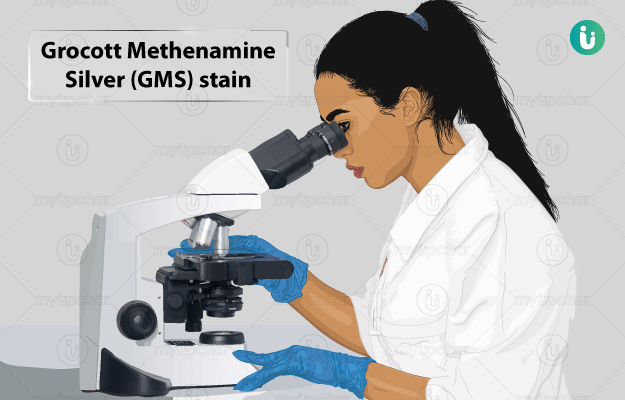What is Grocott Methenamine Silver (GMS) Stain test?
Grocott methenamine silver (GMS) stain is a widely employed stain to identify different types of fungi in cells and tissues. It is also used to check the presence of Pneumocystis jirovecii, the causative agent of Pneumocystis pneumonia in immunocompromised people.
Fungi are microscopic organisms that are present abundantly in the environment. Though there are more than a million types of fungi in the world, only a few of them cause infections in humans. Fungal infections most commonly occur on the hair, skin, and nails. They can also cause vaginal and oral infections.
Some of the examples of fungi species that are detected in the GMS stain are:
- Aspergillus species - causes aspergillosis, an infection that usually affects our respiratory organs. It can affect the lungs or the sinus glands. Some severe form of Aspergillus infections can spread to the brain, kidney, heart or skin (invasive aspergillosis). (Read more: Aspergillus galactomannan test)
- Candida species - causes candidiasis. It usually affects the skin, mouth or genital areas. However, in a person with weak immunity, these species can affect the internal organs as well.
Premature infants, the elderly and individuals with HIV infection or those undergoing surgery or on chemotherapeutics or immunosuppressants are usually at a high risk of having a fungal infection.
































